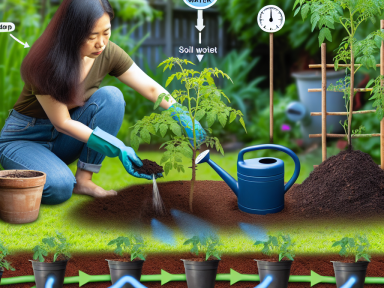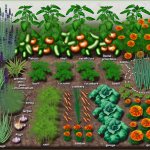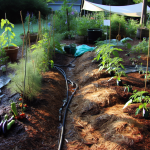Understanding Deep Watering
Deep watering is a technique that targets the roots directly, ensuring that plants receive adequate moisture deep into the soil. It’s a method favored by seasoned gardeners because it encourages the development of a robust root system and ultimately leads to healthier, more resilient plants.
Why Deep Watering is Essential
- Roots Grow Deeper: By applying water deep into the ground, you encourage roots to penetrate further into the soil. This strong root foundation makes plants less susceptible to drought.
- Improves Soil Quality: Deep watering helps dissolve nutrients in the soil, making them more accessible to plant roots.
- Reduces Water Waste: Surface watering often leads to evaporation and runoff, wasting water. Deep watering reduces these issues, ensuring more water reaches the roots.
Steps to Implement Deep Watering
- Prepare the Soil: Loosen the soil around your plants to a depth of at least 6-12 inches. If your soil is compacted, consider adding organic matter such as compost to improve its texture and water retention capability.
- Choose the Right Time: Morning or evening are the ideal times for deep watering to reduce evaporation and allow water to seep properly into the soil.
- Use the Right Tools:
- Soaker Hoses: Lay these around your plants to deliver water directly to the base of each plant. Set the hoses on a slow drip for a couple of hours to ensure deep penetration.
- Drip Irrigation Systems: These systems can be particularly effective, allowing you to control and direct the water flow precisely to where it’s needed.
- Watering Wands or Cans: For smaller gardens, a watering wand or can can be used to apply water gradually, ensuring it sinks deep into the soil.
- Avoid Overwatering: The goal is to provide enough water to moisten the soil to the root depth but not to saturate it. Use a soil moisture meter to check the water level if you’re unsure.
Monitoring and Adjusting
It’s important to monitor your plants to see how they respond to deep watering. Signs of underwatering include wilting, dry soil, and yellowing leaves. Conversely, symptoms of overwatering can include root rot, mold growth, and overly damp soil.
Adjust your watering schedule as needed based on temperature, weather conditions, and the specific needs of your plants. Most plants benefit from deep watering every 7-10 days, but this can vary depending on the climate and soil type.
Special Considerations
- Mulching: Apply a layer of mulch around your plants to help retain moisture in the soil and reduce evaporation.
- Avoid Watering Leaves: Focus on the base of the plant where the roots are located to prevent fungal diseases that can occur from wet foliage.
- Seasonal Adjustments: During the rainy season, reduce watering, and vice versa during dry spells.
Ultimately, deep watering is a practice that, when done correctly, can greatly improve the health and vitality of your garden. With these tips, you’re well on your way to mastering this essential gardening technique.




GIPHY App Key not set. Please check settings